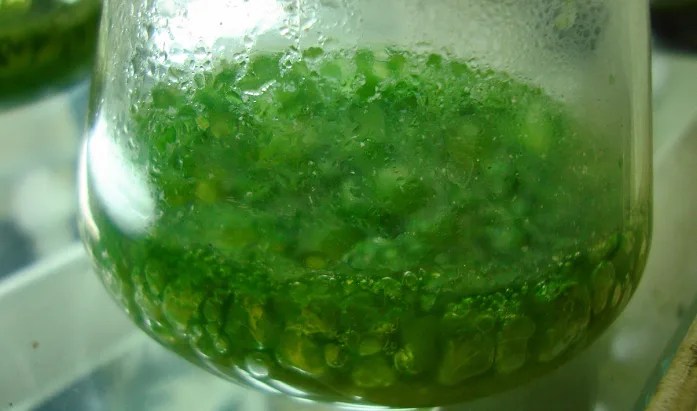
'Watching our lake die': Blue green algae fills Lake Winnipeg beaches
Toxic blue green algae blooms are appearing on Lake Winnipeg beaches earlier than normal, as the deadline looms for the City of Winnipeg to come up with a plan to tackle the excessive amount of phosphorus it's pumping into the lake each day.
Some residents who live along the lake's shorelines say the bright green goo — which grows because of an excessive amount of phosphorus in the water — is the worst they've seen.
"We're just watching our lake die," said Trish Richardson, whose family has had a cottage on Victoria Beach for three generations.
"It's gotten worse and worse steadily every year ... It comes earlier and earlier. When we were kids, it was a few days at the beginning of August. Now we're seeing it starting in mid-July."
Richardson said she and her neighbours are growing increasingly frustrated with the green algae blooms and a lack of action to fix the problem.
"I feel like we can write to the politicians asking them for help and they are not really responding, and nothing's being done," she said.
PROVINCE ORDERS CITY TO CLEAN UP SEWAGE
The algae-causing phosphorus comes from a variety of sources, including household products, farm runoff, and under-treated sewage, according to Marlo Campbell with the Lake Winnipeg Foundation.
But one of the most obvious culprits is the City of Winnipeg's largest water treatment plant, which handles 70 per cent of the municipality's sewage.
The province has given the City of Winnipeg until July 31 to present a plan to reduce the amount of phosphorus it allows the North End water treatment plant to pump into the lake's watershed.
Right now, that plant doesn't treat its water for phosphorus removal, Campbell said.
That means the water it releases into the Red River, and eventually the lake, exceeds the amount of phosphorus it's allowed by over three times.
"Every single day, our North End sewage treatment plant releases about 600 kg of phosphorus," she said. "We think that's unacceptable."
In a statement, city spokesperson David Driedger said the city is committed to protecting Lake Winnipeg through "continued investment to improve the infrastructure at the city's wastewater treatment plants."
The city is not planning to build a new treatment plant until 2035.
But in the meantime, the province is requiring the city find an alternative plan to show how it will reduce the phosphorus.
Using an interim chemical solution called ferric chloride, which is being used to deal with phosphorus in Canada's Great Lakes, is an option, Campbell said.
"Algae on Lake Winnipeg is not a new problem, and unfortunately it sometimes takes events like this to really remind us, to be that visual reminder, of not only the challenges facing Lake Winnipeg, but the stakes," Campbell said.
This article was written for the CBC by Marina von Stackelberg










